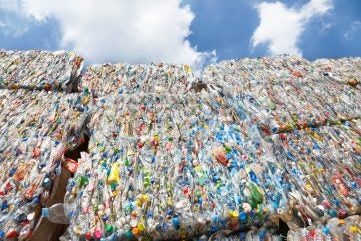
The packaging industry is witnessing rapid advancements in recycling technologies, according to an updated report from the nova-Institute.
The report, titled ‘Mapping of advanced plastic waste recycling technologies and their global capacities,’ offers an extensive overview of these developments, shedding light on key players and the current landscape of advanced recycling.
The report underscores the dynamic nature of the sector, with new players entering the market regularly, ranging from startups to established industry giants.
This expansion is evident in the construction of new plants and the attainment of higher capacities.
With more than 130 technologies profiled, including chemical recycling solutions and pre- and post-processing technologies, the report provides a structured insight into this rapidly evolving field.
Complementary approach to recycling
Amid discussions on improving recycling rates, the focus is shifting towards a wide spectrum of advanced recycling technologies to complement mechanical recycling.
While mechanical recycling has limitations, particularly in dealing with contaminations and maintaining material performance, advanced technologies offer diverse solutions.
These include material recycling based on dissolution, enzymolysis, solvolysis, and thermochemical processes such as pyrolysis and gasification.
Global outlook and European leadership
Europe emerges as a leader in advanced recycling, with the majority of identified technologies and providers located in the region.
Countries such as the Netherlands and Germany lead the pack, followed by North America and other regions outside the continent.
The evaluation of global capacities reveals Europe’s significant contribution, covering nearly one-quarter of the worldwide input capacity.
Furthermore, Europe’s circular strategy is evident in its capacity to cover a substantial share of global production in polymers, monomers, and other secondary valuable chemicals.
Anticipated market growth
Looking ahead, the report anticipates robust market growth over the next five years, with a notable increase in the number of recycling plants.
Projections suggest a significant expansion of input capacity by 2027, particularly in Europe.
However, these projections may be subject to change depending on various factors, including regulatory measures and investment incentives.
The updated report offers valuable insights into the evolving landscape of packaging recycling technologies, highlighting the industry’s commitment to sustainability and circularity.
As advancements continue and partnerships flourish, the path towards a more efficient and environmentally conscious packaging ecosystem becomes clearer.




